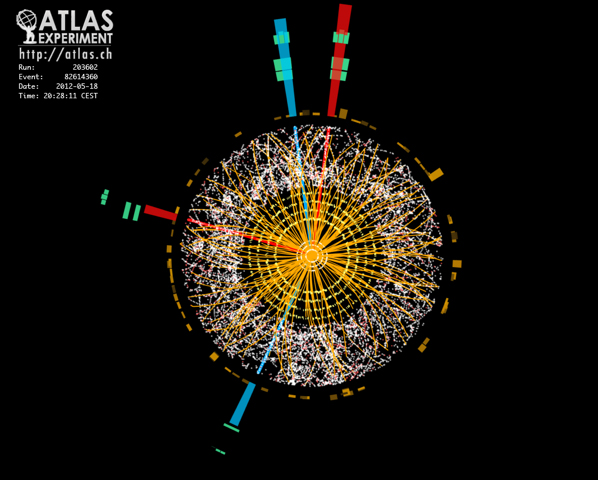The mechanism of Electroweak Symmetry Breaking (EWSB) is one of the least understood aspects of the particle physics today. With the recent discovery of the Higgs Boson at the Large Hadron Collider (LHC), it is now confirmed that the Higgs mechanism proposed to understand the EWSB is the right direction. By now all the expected decay channels of the Higgs boson is observed, and no evidence of anything other than what is predicted in the Standard Model (SM) is seen. While this gives us huge confidence in the SM based on the gauge symmetry principle as the theoretical framework of elementary particle dynamics at the electroweak scale (~ 100 GeV), there are ample reasons to look beyond.
Our main interest presently is in the Phenomenology of Particle Physics Beyond the Standard Model with emphasis on aspects of Electroweak Symmetry Breaking and Higgs Mechanism, and CP violation. Considering model specific scenarios, we investigate the supersymmetric models like the MSSM and NMSSM with CP-violating Higgs sector, 2HDM and other multi-Higgs scenarios with and without CP violation in the Higgs sector. Apart from such specific models, generic analyses in a model independent way to understand dynamics beyond the scope of Standard Model in cases with composite Higgs scenarios, Effective Lagrangian method to investigate non-standard Higgs couplings with fermions and gauge bosons, and the self-couplings of the Higgs bosons, etc are considered.
List of research publications from
![]()
Sponsored Projects
Today's ArXiv: Pheno, Expt, Theory
Opportunities:
We have regular Ph.D programme in High Energy Physics at IIT Guwahati. The summer term admission are usually in June (application deadline sometime in April), and winter term admission are usually in December (application deadline sometime in September/October). Please look for announcements at www.iitg.ac.in

Candidate Higgs decay to four electrons recorded by ATLAS in 2012
Latest Results from ATLAS Higgs Search (July 2012)
ATLAS Results Presented at ICHEP 2012
CMS Observation (July 2012)
CERN Press Release (July 2012)
Useful Links
Upcoming Conferences/Workshops/Schools:In India: SERC school - THEP , AEPSHEP2014,
Outside India: PLANCK2014, ICHEP2014, more...1, 2, 3, 4, 5, 6, 7
HEP Data Base: LC notes, arXiv,
HEP Computations: HEPforge , HEPTools
CalcHEP , CompHEP , FeynArts , FeynDiagram , FeynHiggs , FeynRules , Form , Hdecay , HERWIG++ , HiggsBounds , Higlu , Hpair , HQQ , LHAPDF , MadGraph , NMSSMtools , PROSPINO , PyFeyn , Pythia6 , Pythia8 , ROOT , Sherpa , Spheno , SusyFlavor , V2HV , VV2H , WHIZARD
Mathematica examples © R. Johnson 1998
Experimental Facilities:
General: LHC (ATLAS, CMS), TEVATRON (CDF, D0), ILC
Neutrino: AMANDA, ANITA, ANTARIS, ARIANNA, BOREXINO, CHOOZ, DAYA-BAY, DoubleCHOOZ, EXO, EUSO, GALLEX, GERDA, HOMESTAKE, ICEcube, INO, J-PARK, K2K, KAMIOKANDE, KamLAND, KARMEN, KATRIN, LBNE, LENS, MAP, MOON, NEMO, NOE, NuMOON, NuTeV, OPERA, SAGE, SNO, SOUDAN2, SuperKAMIOKANDE, RENO
B Physics: BaBar, Belle, Belle2, LHCb
Dark Matter: CDMS, CRESST, CUORE, DAMA, PICASSO, XENON, , CAST, DMTools
HEP Organizations: CERN_public, CERN_users, KEK, SLAC, FERMILAB, DESY, ICTP
HEP Education:
 ,
,
 ,
FERMILAB phys4everyone ,
Intro to Partaicle Physics (RAL) ,
FERMILAB AccKiosk,
FERMILAB Anatomy of a Detector
,
FERMILAB phys4everyone ,
Intro to Partaicle Physics (RAL) ,
FERMILAB AccKiosk,
FERMILAB Anatomy of a Detector
HEP general: CERN press, FERMILAB press, KEK press, SLAC press
